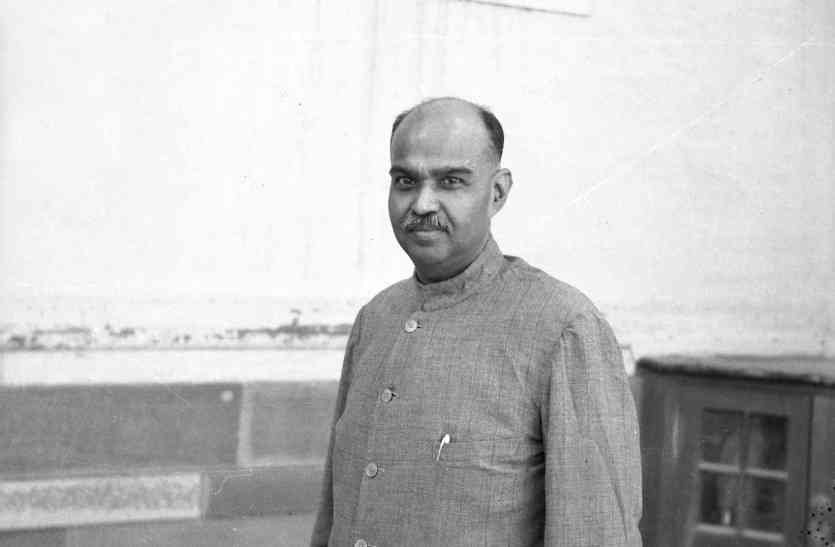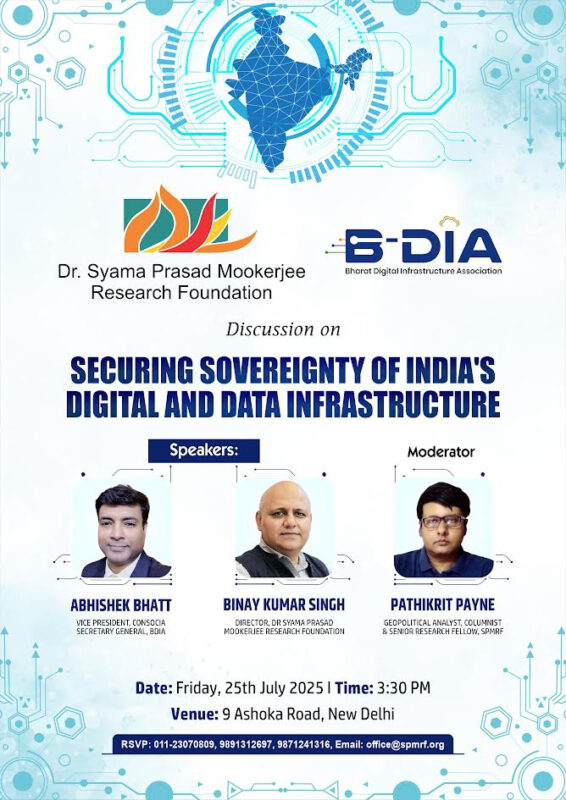Among those Bengali intellectuals who have left their mark as Vice-Chancellors in the history of University of Calcutta , Dr. Syama Prasad Mookerjee is one of the most outstanding. We know of him mainly as a politician. Yet he carried another distinctive identity, that of an intellectual and educationist who was able to place the University of Calcutta among the top ranking universities in the annals of Indian education system. He was the Vice-Chancellor of the University of Calcutta between 1934 and 1938.
The most important change that Dr. Syama Prasad Mookerjee brought to the system of studies in the university was to introduce Bengali as the medium of regular studies. This was given recognition through the University Act of 1935 whereby Bengali was recognized as one of the approved mediums of study. Dr. Syama Prasad declared, “Though western education has imbibed in us a deep sense of patriotism, liberal outlook and political consciousness, I have not been able to discern any reflection of a clear national educational policy within it.”
In order to facilitate the expansion of intellectual thought through Bengali, he took the initiative to publish booklets in Bengali. It may be mentioned in this context that in 1937, for the first time, a dissertation written in Bengali was awarded PhD degree.
Dr. Syama Prasad Mookerjee appointed Rabindranath Tagore as a ‘distinguished professor’ in the department of Bengali. It is pertinent to mention that Tagore was inspired by Dr. Syama Prasad to render his convocation address in Bengali. Calcutta University syndicate decided to invite Tagore to this position. Though not willing at the beginning, the poet had to concede defeat before Syama Prasad’s logic and sincerity and accepted this particular post. In his special lecture, Rabindranath said, “That Bengali was not the medium of instructions in an university of Bengal is extremely shameful and unfortunate…the late Ashutosh Mukhopadhyay had first initiated efforts to make Bengali as a medium of instructions, now that road is being expanded.” It may be remembered that Tagore formulated one project after another for the development of Bengali language for the university.
The second contribution of Dr. Syama Prasad Mookerjee in Calcutta University was to introduce new subjects in the academic curricula and modernize the existing curricula. During his tenure studies through the medium of Bengali, Hindi and Urdu in the Honours course was begun and Assamese was introduced at the graduation level. Training in mass-scale production process was also started in the Applied Physics department through his efforts. Courses in Communication Engineering—i.e. modern Information Technology—was introduced. In 1934 DSC degree in Public Health was instituted through his effort. To make the students interested in military training he introduced courses in military studies. Later, with collaboration of the Indian Air Force a three-month internship programme was started in University of Calcutta. Besides, archaeology course in the Intermediate stage, Aeronautics BA in BF, astronomy in BSc and mathematics in Honours course were started. In 1937 the duration of the MBM course was reduced from 6 years to 5 years, keeping in mind the need for parity in this case with that of other universities; Experimental Psychology was introduced among the subjects in the BSc degree. To make the teachers competent in imparting teaching, teacher’s training course was introduced during his tenure. In 1934 David Hare Training College and Loreto House were made institutions of higher education through his efforts.
Development of women’s education can be said to be the third important contribution of Dr. Syama Prasad Mookerjee. He was deeply interested in female education and with the endowment from late Biharilal Mitra began the course on Home Science for women. The fund of Rs. 6500 from Biharilal Mitra Trust was used as the initial repository which was to blossom as Biharilal College in later days.
As a teacher Dr. Syama Prasad was known for his compassion for the students. As the Vice-Chancellor of the University he dedicated his time, effort and health for the betterment of the university and its students. He believed that the progress of a nation depended on the development of its youth and he single-handedly devoted his physical and intellectual efforts to bring about the advancement of the student-youths. To facilitate this he established the Students Welfare department where regular programmes for exercise were begun.
Incidentally, it may be mentioned that the students of the minority Muslim community held Dr. Syama Prasad in high esteem. Dr. Dhirendranath Sen, a professor in the contemporary time, wrote, “Two Muslim students had come to Dr. Syama Prasad for some help. They told Dhirendranath, ‘Dr. Syama Prasad was, despite his politics, a greater and more sincere friend of young men in difficulty than any other Hindu or Muslim leaders they knew’.” Dr. Syama Prasad gave these two students the necessary certificates and this step points to his equally compassionate attitude to all students irrespective of religion.
Not only in dealing with students’ problems, Dr. Syama Prasad was equally concerned to provide various opportunities to the employees of university. He was the president of the Employees Association. In that capacity he set before the syndicate the proposal of setting up of the Employees Provident Fund.
It is necessary to discuss the relation and exchange between Dr. Syama Prasad and Hassan Syed Suhrawardy in the context of the Muslim students of Calcutta University. Suhrawardy was made the Bageshwari Professor of the university. As a member of the selection committee Dr. Syama Prasad completely endorsed this selection. He wrote, “Through the appointment of a Muslim, the University is entering a new phase and is telling everyone in the world that the statement which is sometimes made that this University is confined to a class, is not correct; and that it is the University of Bengal and the University of India.” As the Vice-Chancellor of Calcutta University Suhrawardy, in his speech before the Senate, addressed Syamaprasad, “Nobody knows more than I personally of the great help as Vice-Chancellor I got from you and the great difficulty I would have been without your cooperation.”
One of the most important measures taken during Dr. Syama Prasad Mookerjee’s tenure was the celebration of the University Foundation Day. 24 January was declared as the University Foundation Day. This endeavour was taken to demonstrate a love for the institution. During the first celebrations nearly 3000 students from different colleges marched to the university. Tagore’s song “Cholo Jai cholo jai” (Come, let us go, come let us go) reverberated in the air. It is also to be remembered that Dr. Syama Prasad Mookerjee played a role in choosing the logo of Calcutta University. He proposed to replace the British-era logo of tri-headed elephant and the motto ‘Advancement of Learning’ with that of a full bloomed lotus with a ‘Shree’ symbol in its middle. However, in this he faced the opposition of the Muslim community as both the lotus and ‘Shree’ were seen as Hindu religious symbols. Ultimately a sun inscribed with a lotus bud at its centre was decided upon as the logo. Later, of course, the lotus bud was replaced by a lotus and the motto ‘Advancement of Learning’ was added.
In the end, it must be mentioned that Dr. Syama Prasad Mookerjee was quite interested in improving the university library, seminary and museum. Ashutosh Museum of Indian Art was established to preserve the specimens of Indian culture and aid in the research of Indian cultural traditions and its evolution. In fact, there is an eclectic mix of fine arts and applied arts as well as folk art in the museum. A new method of study was thus established whereby Bengal as well as Indian culture was showcased in its proper glory.
Dr. Syama Prasad was especially interested in Asian culture. He established facilities for study of Chinese and Tibetan language and culture. The Asian country of Cambodia fell within his intellectual interests. He was felicitated by the then king of Cambodia. It is thought that the inclusion of Chinese and Tibetan studies within the curricula of Calcutta University was symbolic of Syamaprasad’s love for Asia.
In the educational field Syamaprasad’s biggest contribution was in establishing the idea of Panchsheel. He believed that the faculty latent in the youth of the new age could be properly set free through Panchsheel. In his second convocation address (1936) Dr. Syama Prasad set forth the principles of Panchsheel to be definitely followed. These were:
- To spread education at all levels of society to facilitate the development of the virtues of the youth;
- To facilitate proper union between cultural and professional education;
- The teachers must impart education based on the national culture;
- Education must be geared towards the achieving of truth and beauty in free and liberal atmosphere;
- The extension of the aid of the state in education.
The education policy that he initiated as Vice-Chancellor of University of Calcutta was to become the blue print of the national education policy in later days. The ideas that he had introduced in the fields of social sciences, humanities and science occupy an important position in modern Indian education system. He always gave great importance to the unity and welfare of the country. It was for this reason that he wanted to build up a generation of students who would dedicate themselves to the task of serving the nation. The little time in which Dr. Syama Prasad could bring about improvement in the university is but a small chapter of his extremely active life. Hard work and sacrifice are the cornerstones of any successful venture and Dr. Syama Prasad left his mark in both these spheres in his work in the university. The first aim of his life was to bring about India’s independence and the other aim was to keep the university environment free from political and communal strife. It is for this reason that in the contemporary scenario it is necessary for every teacher to emulate Syamaprasad’s life and principles. Here lies the need to know Dr. Syama Prasad and his valuable teachings.
(Writer is a professor, department of South & South East Asian Studies, University of Calcutta.)
Notes and References
- Dinesh Chandra Sinha, Prasanga Kolkata Biswavidyalaya, Calcutta University, 2007, p. 370.
Ibid., p. 416. - Dhirendranath Sen, “Dr. Syama Prasad as I knew him”, Calcutta Review (October 1944): 13.
- For details, see Syndicate Resolutions dated 24.08.1928, cited in Sinha, Prasanga Kolkata Biswavidyalaya, p. 410.
- Tathagata Roy, The Life and Times of Dr. Syama Prasad Mookerjee – A Complete Biography, Prabhat Prakashan, New
- Delhi, 2012, p. 49.
- Ibid., p. 50.
- Ibid., pp. 53-54.
- Ibid., p. 46.
- Dinesh Chandra Sinha, op.cit, pp. 366-367.
(The views expressed are the author's own and do not necessarily reflect the position of the organisation)


